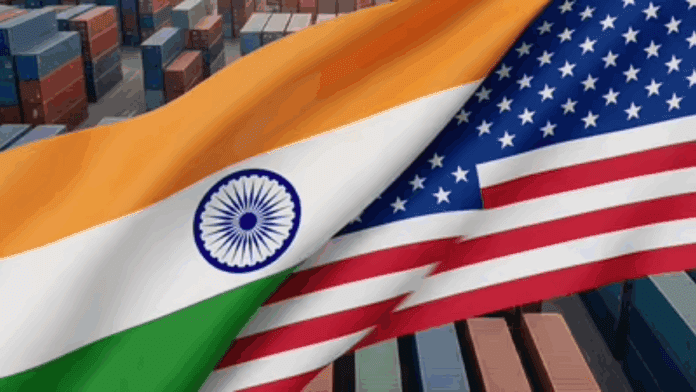A high-powered Indian trade team landed in the United States on Friday for what could be the final round of talks to strike a deal before a key deadline expires on July 9. The two countries are in discussions to avoid the return of reciprocal tariffs on several goods. This visit is seen as crucial because earlier talks failed to make much progress.
In a fresh remark at a White House event, US President Donald Trump hinted that a “very big” trade deal with India could be on the horizon. “Maybe with India. A very big one. Where we’re going to open up India,” he said while speaking to reporters. Trump added that while not every country will get a trade deal, India could be among those that do, raising expectations that the world’s fifth-largest economy may allow more American goods into its market.
The pressure is high, as the last round of meetings did not break the deadlock. The key issues remain unchanged — India’s reluctance to open up certain sensitive sectors like agriculture, and the US’s delay in responding to some of India’s core demands. Trade officials from both sides are now under pressure to resolve these sticking points before the tariff pause ends.
Agriculture Access a Major Stumbling Block
One of the biggest hurdles in the trade discussions is agriculture. The US wants more access to India’s food market, especially for products like soya, corn, and apples. These are top exports for the US, and officials there see India as a promising new market—especially with trade tensions between the US and China still present.
India, however, has been cautious. Agriculture is a politically and economically sensitive sector for the country. Indian farmers depend heavily on local markets, and many fear that opening the sector to large foreign players could hurt their incomes.
To reduce the trade imbalance, Indian experts have suggested offering some room for importing soybean oil. This could be done without affecting Indian farmers directly, as India is already the world’s largest buyer of edible oils. A government think tank recently said that this step may be helpful in making the deal work, but no final decision has been made yet.
Another point India is focusing on is diversifying its defense and oil procurement sources. This strategy not only strengthens India’s international ties but can also help fix the trade gap with the US. In fact, India has already increased oil imports from America. New data shows that India’s purchase of US crude oil jumped by 11.49% to $63 billion in March 2025 compared to a year earlier.
No Trade Promotion Authority Adds Complexity
Despite the strong interest from both sides, there are legal roadblocks. The US government currently lacks what is known as a Trade Promotion Authority (TPA). This means the US administration cannot make binding promises on lowering tariffs without getting approval from its Congress. As a result, any deal signed now may only cover tariffs that the current administration can control directly. This raises questions about how long the benefits of such a deal will last.
The US has also complained about India’s non-tariff barriers — rules and regulations that make it hard for American companies to sell in India, even if tariffs are low. However, the US itself has not fully agreed to several of India’s trade demands, further complicating the negotiations.
The absence of TPA could limit the depth of the agreement. But the talks continue, and the outcome of this round will decide whether both sides can avoid the reimposition of tariffs that were earlier paused to create space for negotiation.


